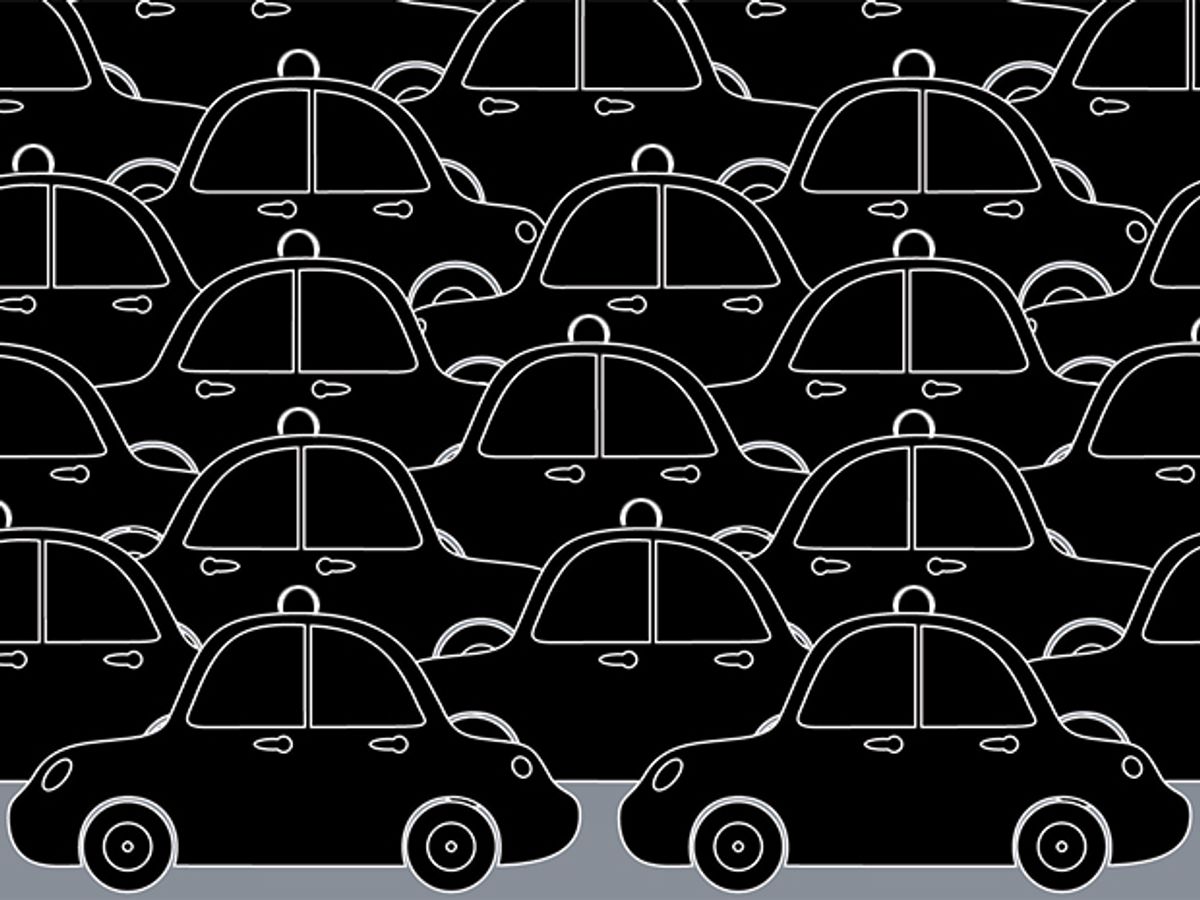The first study to analyze the long-term carbon impact of self-driving cars predicts that automated vehicles could lead to a big increase in energy consumption and emissions, even as they become safer and more efficient.
Researchers warn that people choosing highly automated cars over bicycles, buses, or trains could boost overall vehicle energy consumption by up to 60 percent, outweighing any benefits from eco-driving, ride-sharing, or safety improvements.
“At a high level of automation, some conditions lead to very different energy outcomes, with a possibility of substantial increases in travel activities and energy consumption,” says a study conducted by researchers at the University of Leeds in the UK, the University of Washington in Seattle, and the Oak Ridge National Laboratory in Tennessee. “Policymakers may wish to focus their energies less on accelerating Level 4 automation… and more on measures that promote the application of automation toward socially desirable objectives,” the British and U.S. researchers concluded.
The study is the first to examine the system-wide effects of automating transportation. It analyses multiple mechanisms by which full or partial automation might change the energy intensity of private car and truck use in the United States.
“We saw a lot of people throwing around utopian promises, but we thought we needed a dispassionate analysis,” says Don MacKenzie, director of the Sustainable Transportation Lab at the University of Washington and one of the paper’s authors. “For example,” he says, “people talk a lot about how automation could save energy by relieving congestion, but it turns out we don’t travel that many miles in congested conditions and we don’t actually waste that much energy in congestion.”
Self-driving vehicles that smooth urban navigation and bust traffic jams are predicted to shave, at best, only 4 percent from vehicle-based emissions. At the same time, the researchers found, fully autonomous cars would make driving a much less tedious affair and thus boost the number of kilometers traveled—by anywhere between 5 and 60 percent.
“It’s basic economics,” says MacKenzie. “If you make travel easier, cheaper, and more convenient, you can expect people to travel more.” Commuters able to catch up on work or entertainment, he reasons, might be happier with much longer car journeys, and make more discretionary trips outside work.
Fully automated vehicles would also allow those currently unable to drive—seniors, children and people with disabilities—to take to the roads on their own. While this is likely a social good, it promises to increase energy consumption by between 10 and 25 percent, according to the study.
The researchers are keen to point out that automation also presents potential environmental upsides. More efficient driving styles, including high-speed platooning of vehicles on highways, could reduce energy use by up to 45 percent. And “right-sizing,” where people only use the smallest car necessary for each journey, would have significant benefits.
“If we can get to a world where we can match a vehicle to the needs of every trip, we could cut energy consumption by 20 to 40 percent,” says MacKenzie. “But that does presuppose that we can get everyone into some kind of fully-automated, on-demand, robo-Uber system that works very well in all conditions.”
While it’s projected that because automated vehicles will suffer fewer accidents, and therefore could be made lighter and more efficient, the fuel savings delivered by increased safety might be snatched away by higher speed limits and the attendant aerodynamic losses.
This interconnectedness of system-wide effects means that the ultimate impact of automation on energy use is still up in the air, says MacKenzie. “We see a huge amount of uncertainty around the net effects of automation,” he says. “It’s not just what are the individual factors but how they interact with each other.”
The researchers came up with four different scenarios for automated transportation around 2050. In the best outcome, all the energy benefits emerge and the number of kilometers driven increases only slightly, yielding a 45-percent reduction in total vehicle energy consumption. In middling scenarios, benefits are partially offset by higher rates of travel. A final, “dystopian nightmare” scenario envisages no energy improvements, but improved travel times that result in people wanting to take more road trips. The result: more than a doubling of fuel consumption.
Although the study calls this outcome “highly unlikely,” MacKenzie says, “The value of travel time and how it’s affected by automation is extremely uncertain and extremely important. We need to be doing more research to help us plan and prepare for automated vehicles.”
A good first step, say the researchers, is to focus on connected vehicle technologies. “The big potential opportunities in the near term are in platooning and eco-driving,” says MacKenzie. “One key to us looks like mandating and standardizing V2X communications, the ability of vehicles to talk to one another and infrastructure.”
This could improve safety and reduce energy consumption without making cars tempting enough to encourage more use. Fully self-driving cars, such as Google proposes, risk wandering down the road to the more dystopian future, warn the researchers.
Mark Harris is an investigative science and technology reporter based in Seattle, with a particular interest in robotics, transportation, green technologies, and medical devices. He’s on Twitter at @meharris and email at mark(at)meharris(dot)com. Email or DM for Signal number for sensitive/encrypted messaging.



